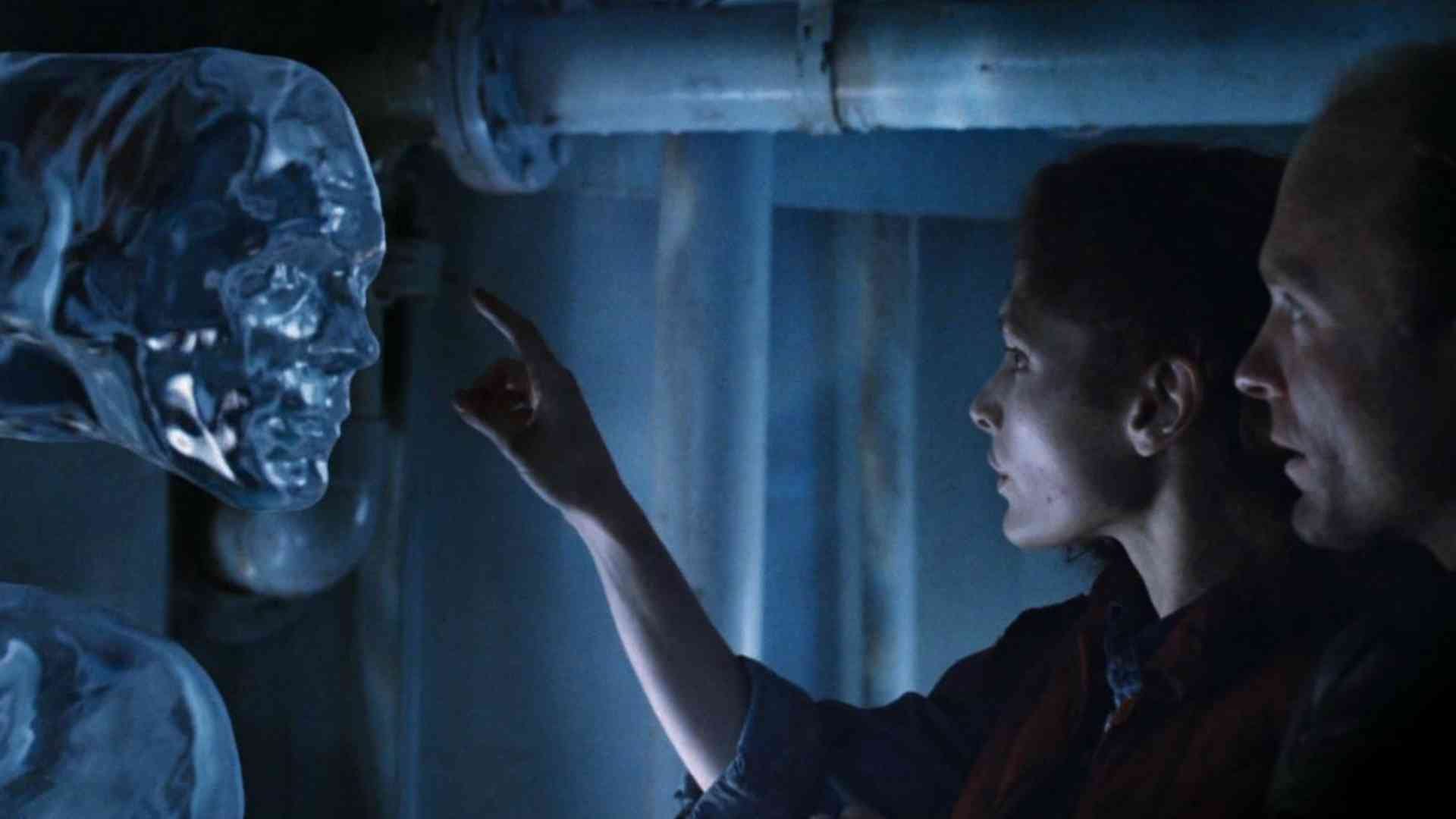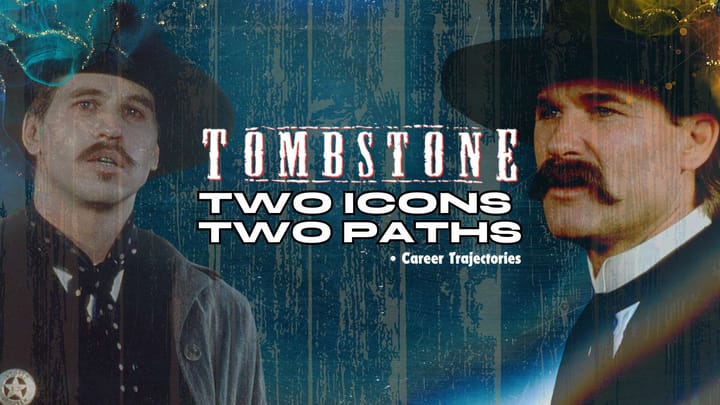The Abyss (1989): Why did it take 35 years to get some love?
This article explores why it took over three decades for The Abyss to finally gain appreciation as an influential sci-fi classic.

The Abyss is a 1989 American science fiction film written and directed by James Cameron. Despite its groundbreaking visual effects and ambitious storytelling, the film received a mixed critical response upon initial release before later earning widespread acclaim. This article explores why it took over three decades for The Abyss to finally gain appreciation as an influential sci-fi classic.
- The birth of an Idea
- Overview of The Abyss
- Initial Release Met With Mixed Reviews
- Competition From Other 1989 Sci-Fi Films
- Harsh Filming Conditions Took Toll on Cast and Crew
- Groundbreaking Innovations Overshadowed at Release
- Eventual Reconsideration and Modern Acclaim
- Why The Delayed Recognition?
- Vindication as an All-Time Sci-Fi Great
The birth of an Idea
In 1897, H. G. Wells became the pioneer to present the idea of an oceanic extraterrestrial being in his short fiction "In the Abyss". The concept for The Abyss first occurred to James Cameron when he was just 17 years old and attending high school. He went to a lecture on deep sea diving given by Francis J. Falejczyk, the first human to breathe liquid in tests performed by Johannes A. Kylstra at Duke University. Cameron subsequently authored a short tale centering on scientists operating a laboratory on the seafloor.
Though the essential narrative stayed intact over time, Cameron reworked many specifics in later years. Upon arriving in Hollywood, he promptly discerned that a team of researchers lacked commercial potential, so he refashioned them into blue-collar deep-sea rig workers. While directing Aliens, Cameron watched a National Geographic documentary showing remotely controlled underwater vehicles probing the far North Atlantic sea bed. The fascinating footage brought back memories of his old short story.
He and producer Gale Anne Hurd chose The Abyss as their next cinematic venture. Cameron created a treatment that hybridised shooting script components and generated much film industry notice. He proceeded to fully script the screenplay, modelling the Lindsey character after Hurd, completing it by the end of 1987. Cameron and Hurd were married prior to The Abyss, separated during pre-production, and officially divorced in February 1989, just two months following principal photography.
Overview of The Abyss
The Abyss centres on a crew of divers enlisted to search for a missing nuclear submarine. They encounter otherworldly beings living in a massive underwater alien ship during their perilous mission.
The ensemble cast includes Ed Harris, Mary Elizabeth Mastrantonio, and Michael Biehn. James Cameron both wrote the script and directed the production, bringing his signature style of technologically innovative, action-packed storytelling.

Groundbreaking visual effects were developed specifically for The Abyss, particularly the pioneering CGI (computer-generated imagery) used to create the alien beings dubbed "Non-terrestrial Intelligent Life Forms." This marked some of the earliest use of CGI in a feature film.
Initial Release Met With Mixed Reviews
When The Abyss premiered in theatres in August 1989, reactions from critics were decidedly mixed.
While some praised the visual mastery and creativity of Cameron's direction, others felt the story was lacklustre. Reviews tend to applaud the remarkable technical achievements but critique the plot and characters as inferior.
"The movies' running time works against the absorbing things Cameron does underwater." - Janet Maslin, The New York Times
The lukewarm critical consensus likely dampened box office earnings. With a budget of $70 million, The Abyss only grossed $54 million during its North American theatrical run.

Though not an outright failure, it was far from the smash success of Cameron's previous blockbusters like Aliens and Terminator. The film seemed destined to fade into obscurity as an ambitious misfire.
Competition From Other 1989 Sci-Fi Films
Another major factor working against The Abyss was the incredibly strong lineup of other science fiction films released in 1989.





1989 Sci Fi/Fantasy film competition
Blockbusters like Batman, Back to the Future Part II, and Indiana Jones and the Last Crusade dominated media attention and box office charts.
Smaller but acclaimed sci-fi titles like Star Trek V: The Final Frontier and The ‘Burbs further crowded the genre landscape that year.
In this context, The Abyss struggled to leave a lasting impact during its initial run. The dazzling visuals were soon outshone by the next year's VFX achievements.
Harsh Filming Conditions Took Toll on Cast and Crew
The ambitious underwater filming led to an arduous shoot fraught with challenges. Most scenes took place inside large tanks of filtered water built specifically for the production.
The breathing fluid used in the film actually exists but has only been thoroughly investigated in animals. Over the previous 20 years it had been tested on several animals, who survived. The rat shown in the film was actually breathing fluid and survived unharmed. Production consulted with Dr. Kylstra on the proper use of the breathing fluid for the film. Ed Harris did not actually breathe the fluid. He held his breath inside a helmet full of liquid while being towed 30 feet (10 m) below the surface of the large tank. He recalled that the worst moments were being towed with fluid rushing up his nose and his eyes swelling up.
Performing stunts and operating cameras while submerged led to immense physical difficulties and dangers. Even leading man Ed Harris nearly drowned at one point due to a malfunctioning breathing apparatus.
These production nightmares exacerbated tension among the cast and crew during the already stressful filming process. Reports of clashes between Cameron and his collaborators emerged, further tarnishing media perceptions around The Abyss.

"It was a hard, physical shoot. We were wet all the time. And, you know, Jim Cameron and I had our moments." - Ed Harris discussing filming The Abyss
This behind-the-scenes turmoil became public knowledge, casting Cameron as a difficult director and creating a negative buzz.
The cast and crew endured over six months of gruelling six-day, 70-hour weeks on an isolated set. At one point, Mary Elizabeth Mastrantonio had a physical and emotional breakdown on the set, and on another occasion, Ed Harris burst into spontaneous sobbing while driving home. Cameron himself admitted, "I knew this was going to be a hard shoot, but even I had no idea just how hard. I don't ever want to go through this again".
Groundbreaking Innovations Overshadowed at Release
While The Abyss features some of the most advanced visual effect shots created up to that point, many innovations went underappreciated in 1989.

The CGI work was revolutionary for the time but limited by available technology. It pales in comparison to the modern CGI spectacles that viewers have grown accustomed to.
Similarly, the film’s immersive underwater photography and lighting effects were unprecedented technical accomplishments that failed to awe contemporary critics looking for flashy computer effects.
In the moment, the incremental innovations in The Abyss were simply overshadowed by other releases showcasing flashier effects and more dynamic stories. Only in retrospect could the film’s influence be fully appreciated.
Eventual Reconsideration and Modern Acclaim
In subsequent years, perceptions around The Abyss gradually shifted to recognise its significance within the sci-fi genre.
Appreciation grew for the ambition of its narrative, pioneering visuals, and overall craftsmanship. Thematic analysis also focused on the inventive conceptualization of extraterrestrial life and contact.
“One of the best “alien encounter” films, a thriller that is also a superb adventure with some absolutely breathtaking sequences." - Empire
Modern visual effects artists frequently cite The Abyss as an essential inspiration that informed new realms of CGI innovation.
The film now ranks highly on lists of both the best science fiction and the best James Cameron films. It laid crucial technological and storytelling groundwork that blockbusters like Avatar would later build upon.
While it failed to achieve success in 1989, The Abyss has cemented its status as an ahead-of-its-time sci-fi achievement.
Why The Delayed Recognition?
But why did it take over 30 years for The Abyss' brilliance to be recognised? Several key reasons help explain the belated acclaim:
1. Ambitious concepts ahead of their time
Central themes surrounding oceanic alien life, extraterrestrial intelligence, and contact felt fringe in 1989. Critics could potentially dismiss these provocative ideas as too fanciful. But these concepts strongly resonate with modern viewers pondering existential notions of alien life.
2. Pioneering technical accomplishments undervalued
The CGI and effects were so far beyond previous capabilities that contemporary critics lacked proper context to appreciate the quantum leap in innovation. Only in hindsight could the film’s immense influence be measured by subsequent visual advancements it enabled.
3. Emphasis on emotional depth over flashy spectacle
Unlike many science fiction releases, The Abyss focuses more on thoughtful philosophical ideas and character relationships than on high-thrills. This more meditative approach possibly alienated casual 1989 moviegoers expecting more formulaic genre entertainment.
4. Behind-the-scenes problems clouded perceptions
Accounts of strained on-set conditions and Cameron’s harsh directorial style coloured reviewers’ impressions of the film. If the shoot had gone smoothly, reactions may have focused more on the movie’s assets than production issues.
Vindication as an All-Time Sci-Fi Great
While misunderstood upon its initial 1989 theatrical run, The Abyss has earned recognition over time as an all-time great work of science fiction cinema.
Its grand themes, emotional resonance, technological leaps, and masterful direction by James Cameron deservedly cement its status as an iconic and wildly influential film.
Ambitious and ahead of the curve, The Abyss saw its brilliance finally revealed as audiences and critics came to appreciate this watershed movie that was simply too advanced to be fully grasped in its era. The years have proven its profound impact on both the sci-fi genre and blockbuster filmmaking.
Thanks for taking the time to read this article. Please consider checking out more of our content. New articles are released weekly. Your support means the world to us.
Happy Viewing!
Tweet




Comments ()